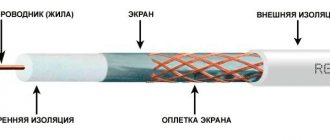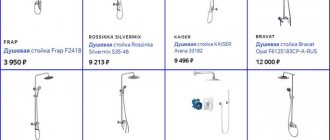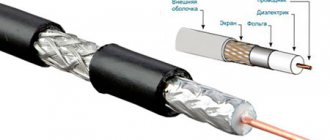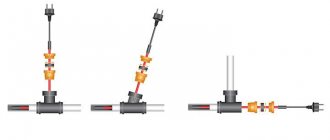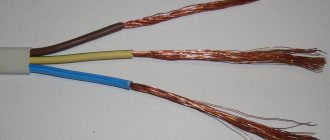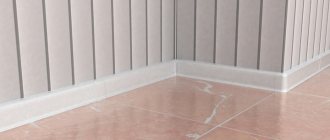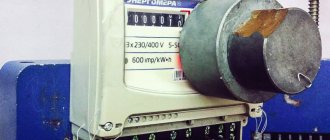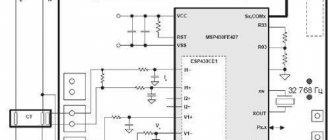Content:
- 1 Definition of electrical cable
- 2 Structure of the television conductor
- 3 Marking
- 4 What to look for when selecting a cable? 4.1 Protective layer material
- 4.2 Mechanical strength
- 4.3 Screen Features
- 4.4 Cable length and thickness
- 4.5 Outer shell
- 4.6 Central core
- 4.7 Manufacturer
- 4.8 Dielectric layer
When choosing a coaxial cable for a TV, you will notice that various types and brands of cable products are offered for sale to customers. Before purchasing coaxial wire, it is recommended that you familiarize yourself with the characteristics and differences between different product models, as well as the characteristics of its design.
Installation rules
The presented wires are quite flexible, so the installation process will not be difficult. It is important to remember that the turning radius during installation cannot exceed 12 times the bending value of the cable sheath.
If the master does not follow the recommendations, then the bend will gradually destroy the integrity of the shell. The central core will push through the dielectric layer, so a short circuit will occur on the screen. It is important not to hang the cable on a nail , otherwise it will stretch under its own weight and lead to a break in the central core.
It is necessary to properly cut the ends in order to attach the connectors; the accuracy of the operation of electrical devices depends on this. You should do it this way:
- Cut the cable at right angles to the sheath.
- Insert the stripped end of the wire into a special tool to remove the insulating layer.
- Squeeze the tool, as a result the insulation will be removed and the copper core will be exposed.
- Clamp the cable well and turn it several times.
- Make a few more turns using the ring without releasing the tool.
You might be interested in Review of effective methods and types of neutral grounding
After this procedure, the master receives a completely stripped cable, which is ready for further connection.
The sheath protects against moisture penetration into the copper wire and prevents various external damages during the entire period of operation. The cable should never be laid underground or in damp places. Water seeps into the protective shell, causing its gradual destruction, oxidation and short circuit of the central rod. But it can be used on the surface with low humidity levels, as well as in rainy weather.
To prevent moisture from penetrating inside, you need to carefully treat the joints. Silicone sealants are used for this. Electrical tape and plasticine are not proven methods of protection. You can also buy connectors that are resistant to the negative effects of moisture. Connections made by soldering can change the level of characteristic impedance.
Electrical cable definition
Coaxial (coaxial cable) is a telecommunications element that allows you to simultaneously broadcast a certain number of high-frequency signals with minimal losses. Its operation is based on the potential difference that appears in the presence of two different metal conductors, separated from each other by means of a guide insulating layer. Why is coaxial cable needed?
Insulated cores are used in devices that transmit industrial and satellite television signals in automatic and alarm systems or computer networks.
Characteristics of coaxial cable
The main characteristics of coaxial cable include:
| probability of a collision | 10^(-9)…10^(-7); |
| frequency | more than 50 MHz (video, path length - 2 km), more than 400 MHz (radio, length - up to 50 km with an amplifier); |
| price | small compared to fiber optics; |
| interference immunity | high, including electromagnetic; |
| transferability | analog and digital signals; |
| bandwidth | wide; |
| the ability to transmit a signal over a distance without interference | 100-1000 m; |
| degree of radio emission | small. |
TV conductor structure
Getting acquainted with the structural properties of the cable for a TV, you will notice that all models provide for a similar systematization of the internal element:
- Coaxial is a conductor that affects signal transmission. It is made from copper tube, solid wire or stranded material. The quality of the raw materials influences the permissible bending coefficients and the signal.
- Dielectric is a plastic layer that acts as a conductor retainer.
- Metallized thickness is a combination of polyester with copper or aluminum.
- The metal braid is made of foil and thin wire. The more complete its weave, the better the quality of the cable and the degree of protection from external influences (radiation, moisture).
- The outer casing protects all structural components of the electrical wire.
The differences between the products lie mainly in the characteristics of the material used.
When solving the problem of which television cable is better to choose, you need to decide on your goals. For example, if the signal distance is minimal, it is not recommended to overpay for an expensive cable.
Design and principle of operation
The simplest coaxial cable design consists of a copper core enclosed in insulation, a metal braided shield, and an outer sheath. In some modifications there is an additional layer of foil, which means double screening. The strongest interference is overcome by cables containing four shieldings, including two layers of foil and two layers of metal braid. This is the simplest answer to the question of what this design looks like and what it contains inside.
Some cables may be covered on the outside with a metal mesh, which acts as an additional screen. It provides reliable protection for data transmitted over the cable while absorbing interference or noise in the form of external electromagnetic signals. The presence of such a screen does not allow interference to distort the transmitted data.
Data encoding is carried out using electrical signals transmitted along the core. It can be continuous and consist of one copper wire or several wires. The core is surrounded by a layer of insulation that separates it from the metal braid. The braid itself acts as a ground, eliminating electrical noise and crosstalk. This interference is electrical interference caused by nearby wires.
Contact of the metal braid and the conductive core is not allowed, as this may lead to a short circuit. Interference will penetrate the core and destroy the transmitted data. Additional protection against interference is provided by the outer non-conductive sheath, which can be rubber, plastic or Teflon.
Marking
Laying and connecting a coaxial antenna cable does not require any special skills or knowledge in this area. It is much more difficult to choose an electrical cable taking into account the specifics of television transmission of information. To understand which option is better to buy, it is recommended to consider the labeling and initial data of the products.
Coaxial cable brands:
TV repairs are 30% cheaper
than in service centers near your home
Order repairs
- RG – 6 has gained popularity due to its low price and good properties. Suitable for interior work.
- RG-59, a thin cable that receives all types of signals, loses its characteristics at a distance of more than 190 m.
- PK 75 from the Russian manufacturer provides a copper core and braid, as well as a double protective stage made of tinned copper and aluminum.
- The SAT 703 brand has a characteristic impedance of 75 Ohms, as well as a double screen.
- SAT 50 from the Italian brand has an enhanced degree of protection.
- DG 113 is the most expensive antenna coaxial cable, but increased shielding values transmit high-level signals.
What to look for when selecting a cable?
Before you go to the store, you should figure out which antenna cable for your TV is best to buy. First, it is recommended to find out the following parameters:
- number and type of connected television equipment;
- location of the signal resource - loggia or roof;
- what space is intended for laying - an apartment or a large country house;
- terms of Use;
- format of the stored signal – type of broadcasting (analog or digital);
- total length of the network.
For high-quality signal reception, each TV antenna cable must have a resistance coefficient of less than 75 ohms.
Protective layer material
To increase strength, additives are added to plastic to reduce the negative impact of atmospheric factors. This TV cable is more expensive and is intended for laying external lines. Indoors, it is better to use cheap types of low-current cables.
Important: Some product manufacturers produce polymer layers from recycled materials. As a result, the cost of products decreases, and the profit of the enterprise increases.
Recyclable materials are obtained after processing various wastes. As a result of prolonged use, they lose their original characteristics, have low mechanical strength and are susceptible to ultraviolet radiation.
Distance from signal source to consumer
Signal leakage in the conductors occurs despite the reduced resistance. The longer the distance, the larger they are. It is recommended to reduce the negative impact by increasing the cross-section. The further the television panel is located from the internal electrical wiring or antenna, the thicker the TV wire will be needed.
Important: For extremely large diameters, specific adapters should be selected to connect consumers and lines.
Mechanical strength
To check the strength of polyethylene, you need to lean the element against the tensile load segment, and 2-3 times. bend and unbend the wire. If it is clear that the polymer has quickly cracked or stretched out, then it is not advisable to buy cable products.
Screen Features
It is recommended to buy an antenna cable for digital television with at least 2 shielding layers. This factor protects the signal from the influence of an external field (electromagnetic or magnetic). Modern versions of cable products include a layer of foil and a special winding made of thinner wire.
Cable length and thickness
These parameters will allow a non-professional person to learn about the technical features of the electrical wire. Thin coaxial cable is easier to lay and hide in a box. But at the same time there will be comments on the quality of the transmission. At home, conductive conductors with a cross-section of at least 3.5 mm are used.
If we consider the length of the conductor, then to prevent problems with installation it is necessary to have an electrical cable with a reserve. It will come in handy if some area is damaged during work and needs to be replaced. The second factor is rearranging the furniture. It is possible that the television panel will be moved, and this will require a longer coaxial cable.
The choice of electrical cable involves determining the length of the network. The longer it is, the thicker the cable you need to choose.
Outer shell
There are models in black and white. Dark products are covered with a polyvinyl chloride shell, and light ones are covered with polyethylene film. For street wiring, only black wire was used, but nowadays white SAT 703 brand is often chosen. This universal option is suitable for installation both outside and inside. It is also necessary to take into account the thickness of the outer coating. The larger it is, the more reliable and secure the connection will be. At the same time, the flexibility of the structure is significantly reduced and the bending radius is limited.
Central vein
The channel core is made primarily of copper or other durable metal alloys. The option with a copper core is considered the most reliable and resistant to damage. Its thickness is also taken into account; this indicator ranges from 0.3-1 mm.
Manufacturer
The electrical accessories market offers customers a wide range of antenna wires for TVs. This affects manufacturers and technical features of products. Experts advise purchasing products from well-known brands, which have many advantages.
Experts suggest focusing on offers from the following companies:
- Mediaflex;
- Cavel;
- commscope;
- Belden.
The manufacturer is not considered the main factor when purchasing. First, the technical criteria of the television cable are determined.
Dielectric layer
The interlayer serves to fix the conductor and insulation. For these purposes, foamed polyvinyl chloride is used. There are also polyethylene, fluoroplastic options made of polyethylene or an air shell.
Coaxial antenna cable
In addition to radio frequency, there is an antenna cable. These should not include screen cables with conductive wire. The purpose of a power coaxial cable is to eliminate unwanted connection to the cable line by “throwing” an additional wire.
Coaxial cable design
A coaxial cable consists of several conductors that are located on the same axis and separated by insulators. This cable consists of:
- internal conductor - straight or twisted single- or multi-wire core made of an alloy of copper, aluminum, which is covered with insulation with dielectric functionality;
- external conductor - a braid of copper or alloy wire, on which, in some cases, aluminum foil or film is applied;
- outer sheath of the cable - the sheath intended for protection is made of PVC or polyethylene.
Recommendations for use
To ensure that your digital television cable lasts a long time, it is advisable to follow these recommendations:
- when choosing a product, you need to select brands that have good wave capacity;
- for laying electrical wires in extreme conditions and on the street, it is better to buy options with special impregnation;
- You should not lay the coaxial television cable near electrical appliances, they may interfere;
- When laying a conductor, it is necessary to make a minimum of connections and solders; a large number of them has a bad effect on the properties of the signal. A good solution is to lay a continuous shell;
- When installing and connecting the electrical wire, you must follow the manufacturer's instructions. Particular emphasis is placed on the gap between the fasteners and the bending line;
- It is better to use branded devices for branching. Electric amplifiers and splitters are placed at accessible points. If a breakdown occurs, repairs are easier to do.
Subtleties of choice
Experts have identified nuances that are important to consider when selecting a cable for digital television:
- The thickness of the electrical wires is determined by the length of the laying route. The distance from the antenna to the equipment affects the attenuation of the television signal;
- do not forget about the location of electrical wiring or utilities that create an electromagnetic environment;
- It is advisable to select a cable for the TV antenna with a double protective layer;
- if the antenna is located nearby - on a balcony or on television equipment, then a coaxial wire with a diameter of 6 mm will be sufficient. To place it on the roof of a country house or on top of a multi-story building, you need to take a size of 7 mm;
Important: a copper core is required for satellite transmission; budget variations are suitable for all other channels. In the store you need to take a good look at the cut and properties of the inner core.
Connection method
Having selected a suitable coaxial cable, you need to make sure that your existing equipment has a special connector. Most often there are F-connectors, less often N-varieties.
Fasteners come in the form of crimp plugs or screw plugs. The simplest connection method is a plug (angled or straight). Step by step execution:
- Using a knife, cut the outer layer to a length of 15 mm and remove it. Wrap the conductor screen with foil. Remove the insulation from the core and wrap it around the plug.
- Cut the protruding main core to the required length.
- Screw the crimp circle onto the edge, cut the insulating layer to a length of 6 mm and remove it.
- Remove the layers of copper tube from the cleaned segment. These manipulations should be done with care so as not to damage the element or interfere with signal transmission.
- Place and slide the fork lengthwise until the inner fibers emerge from the middle.
- Insert the connector into the edge of the wire and secure with a crimp ring.
- Cut off protruding wires.
Coaxial cable is one of the important components of antenna installations. This factor is often overlooked and underestimated when purchasing a conductive cable for analog, satellite or digital broadcasting.
Found a mistake? Select it and press ctrl+enter
- 100
Types of cables
All cables are classified according to the RG (Radio Guide) scale. Depending on the design features and functional purposes, each element has its own marking . There are two main types:
- Thin coaxial cable - the wire diameter does not exceed 6 mm, so it is highly flexible. It is used over short distances, as the signal fades faster in it. It is considered the most acceptable type for installing local networks and connecting to each computer. To facilitate installation and connection, special connectors are used.
- Thick wire is a classic element with a diameter of about 10 mm. It has a more powerful and rigid design, which requires special tools for installation and commissioning. It is considered a more expensive product, so it is used only in necessary cases. Some types of thick cables are available with two shields and additional insulation between them. This provides greater protection from external influences and eavesdropping capabilities.
There is another type of cable that is used in electrical networks. Its design is no different from other types of coaxial products. It consists of an internal single-core wire and a multi-core braid, between which there is a layer of insulation.
From the outside it is protected by a dielectric shell made of plastic and supplemented with armor fittings. The disadvantage of this design is considered to be its rather large weight, which does not allow its use in overhead lines.
